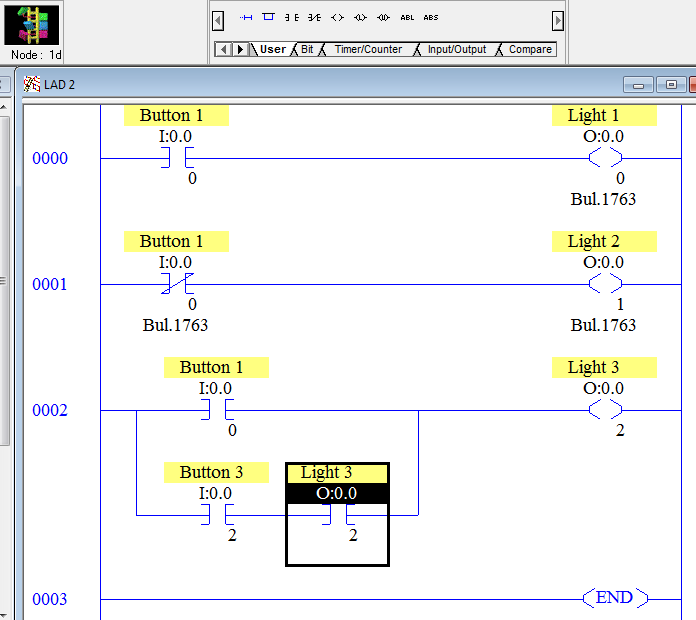

- #Rslogix 500 emulator outputs not working how to#
- #Rslogix 500 emulator outputs not working full#
- #Rslogix 500 emulator outputs not working code#
We can find this name by expanding the I/O tree under I/O configuration in the RSLogix/Studio 500 project. Tags for the modules in the middle chassis will be named “ remote_asb“. Tags for modules in remote chassis will begin with the name of the adapter in that chassis.Īs we said before, all tags for all modules in the top chassis will begin with the name “ Local“. All tags for all modules where the processor resides will start with the name “ Local“. If you only have one chassis with a processor, we can always start by locating the Local controller tag. Your schematic will show you what chassis the output is connected to, the slot, and the terminal. When troubleshooting a ControlLogix output, you might first locate the failed output on a schematic.

Our goal here is not to change logic or the operation of the equipment in any way, but to use Studio 500 as a tool to locate failed field devices.
#Rslogix 500 emulator outputs not working how to#
This will give you a better understanding of how to navigate, and locate the I/O. In this example, however, we will have multiple field devices that are not made. Most of the time, there will be just one field device that we are not getting a signal from.
#Rslogix 500 emulator outputs not working code#
Since the PLC code is considered existing and it operates properly in the currently installed system, I don't think we have much of a chance of convincing him to remap the IO to N registers. The original programmer used the actual input contacts throughout the programs, instead of mapping them to N or B addresses. The majority (20 of our IO cards) of our I/O is from a switchgear located in the same room as the PLC Panel, so RIO wasn't considered.Īlso, unfortunately, looking through the code, there is no input mapping routine or section of the code that could be easily removed for testing. Since we aren't doing the actual PLC work (the PLC code is existing - we are doing the HMI and electrical), we didn't have any control over which PLC was installed. Like Ken said, only the first 30 slots can be used - the last 2 slots on the 7 slot rack are unused. You can invert the state of discrete devices quite easily in one place, and block or jumper devices that have failed or are not yet functional. It is also a useful method for dealing with last minute changes or errors that might occur during installation.
#Rslogix 500 emulator outputs not working full#
When you put the code in the real machine, you can remove the test code (or remove the JSR to it), and "fill in the blanks" of the I/O map to match the real machine.īy using the I/O mapping method, your machine control logic can be tested without real I/O, and you can plug in the real addresses later when you have the full rack setup. This can be a lot of extra work for a complex machine, but can save lots of debugging during start up which could result in great savings. This way, they are still there in the input map (or output map) to remind you that they need a real world assignment in the finished project, and you can right click and "toggle bit" to test the main program.Īlso, you can add a ladder file for testing purposes that can simulate the I/O, for example if a motor starter output bit is turned on, then 3 seconds later a limit switch input should come on. Any I/O that can't be addressed in the test setup can be listed like this:

In those two ladder files, you will map the real I/O to internal bits which are used in the main logic of the PLC.

create a ladder file called "outputs" and make it the last JSR in the main program. create a ladder file called "Inputs" and make a JSR to it at the beginning of the main program.Ģ. If you need to use the real processor for testing, here is what I would do:ġ. If you can get RSLogix 500 Emulate, then it may allow you to do much of your logic testing, although it will not emulate PID loops and there are limits to what it can do with communication.


 0 kommentar(er)
0 kommentar(er)
